Your Airplane Model Arrives Like This (See Pictures). What Do You Do?
- Jorge A. Zajia

- Jul 18, 2023
- 6 min read
Your Airplane Model Arrives Like This:
What Do You Do?
Broken Models are Part of the Business
Anyone who has been collecting die-cast airplane models for some time, likely knows that wings, stabilizers, engines, landing gears, antennas, and anything else that can become detached, will indeed do so more often than not. I, for one, keep a tube of Japanese super glue (that stuff is good!) handy on my desk and use it frequently when unboxing models.
A loose wing or detached landing gear is certainly not a problem in my book. However, things can go downhill in a hurry when the loose part is nowhere to be found, or it becomes in contact with other parts of the model scratching the paint off and possibly causing other damage.
The latter happened to me for the first time earlier this year when a Viasa DC-10 (YV-135C) arrived with a loose horizontal stabilizer that created several deep scratches on the tail area. Luckily, besides paint, it didn’t touch any elements of the artwork, such as titles and emblems. But still, the model was effectively ruined.


So, what do you do when such a thing happens? Well, I’ll tell you what I did.
The first thing is to document the damage with pictures and contact the retailer. Normally I will seek to return the model for a full refund and try to find a replacement from a different retailer. My reasoning behind this is that, as stated earlier, these occurrences are not all that uncommon, so I want to avoid any chances of having to return a second defective model to the same retailer as I don’t think that is a good position to be in.
However, in this case there was no replacement available, the model came from a collection sale and had been sold out for more than a decade. While I already owned two examples of the same model, I really wanted to keep the third one. So, instead of returning the model and taking the full refund that the retailer offered, I told the retailer that I was willing to keep the broken model and take a partial refund in the form of a store credit. Not the greatest deal, but at least it helped me feel that I had not been ripped off entirely – only partially and by choice. Moving on...
Okay, so now I had a model with some serious paint chips that were probably not going to look okay by simply covering them with paint. Time to use my brain.
To the Shop...
If you are an avid modeler and craftsman, you are welcome to continue reading for entertainment purposes, but I doubt I will mention anything you don’t already know; in fact, you probably will be able to teach me a few things after reading this story. But for those of you wondering if a badly damaged model can be restored so that it can be proudly displayed, read on! I am happy to report that the answer is yes, but the process can be painful.
The first thing I did was apply small dots of putty to fill out the voids left by the missing paint. Since I wasn’t counting on diving into – another – customization project when I received this model, it sat like that for more than a month as I did not have the time to sit down to sand excess putty.

Eventually, I got around to it. I was initially trying to be gentle using a very soft sanding sponge to avoid damaging surrounding areas, but I wasn’t making a lot of progress, so decided to switch to a more abrasive sandpaper. Things started moving forward quickly then, but of course, the surrounding undamaged areas could no longer be described as such, and that was a bit terrifying to see, but I ended up achieving the even smooth surface that I was looking for.
Next, I needed to come up with a plan to paint the patches. I needed to do some color blending to match the Viasa orange, a task that resulted to be more challenging and messier than I had expected. When I finally found a color tone that I was satisfied with, I was so tired that I became complacent in the subsequent steps of this process: thinning the paint, and masking.
While I did mask some areas I wanted to preserve, I did a poor job overall, and the airbrush splattered blobs of overly thick paint all over the place. I still thought that the model looked okay enough and for several days considered the project to be done. Below you can see some pictures showing how the model looked during this stage, including some comparison shots with an undamaged model. At a distance, my shoddy workmanship was not evident to unsuspecting eyes, but it quickly became obvious upon closer look.




In the end, I decided that I was not satisfied with the results, so I started from scratch again.
Second Attempt
The second try started by scrubbing off all of the paint that I had applied that managed to cover parts of the #2 engine, followed by a more meticulous masking job than what I had done the first time. I decided that I was going to fully repaint the whole vertical fin, hoping that the vertex between it and the #2 engine would help attenuate the slight contrast between the original orange tone and my homemade mixture. In the end, it did.
Then I proceeded to destroy the entire vertical fin with sandpaper removing my first sloppy paint job, but also parts of the original paint and the Venezuelan flags. Yes, even though the model was already damaged, it was difficult to inflict this level of destruction on a holy grail as I was keenly aware that at that point the model became literally worthless. Luckily, I was able to return its value later.
I knew that the improperly thinned paint had been an issue on the first try, so this time I made sure that I was satisfied with its consistency before starting to airbrush.

To avoid opacifying the newly applied orange paint layer with masking tape, I applied a generous layer of RustOleum clear coat enamel, after the paint had dried, of course. The thick shiny coat brought the tail in line with the rest of the finish the model comes from the factory with.
After the clear coat dried overnight, I used masking tape to paint the leading edge with silver enamel.
To replace the Venezuelan flags, I printed some decals on white water-slide paper. Viasa applied a white background above and below the flag to increase the contrast between the red and yellow with the orange tail. To achieve this, I purposely left out excess white decal paper above and below the flag artwork. The white stripes on my decals are a bit bigger than what they were on the real aircraft, but this was a decision I made to better manipulate the tiny decals without damaging the artwork.
One advantage of having to reapply the flags using homemade decals is that I was able to add the stars to the blue stripe. This is a detail that the original model did not have and that I have always considered the only significant omission of this otherwise stunning artwork, my favorite of all time.
Finally, the time came to apply one last layer of clear coat to seal in the flag decals and the leading edge silver paint. For this last coat, I used Mr. Hobby Top Coat gloss finish, my favorite modeling topcoat. Below are some pictures of the final result.





Done
So, there you have it. If we ignore my first try, the process is the following: prepare the surface (putty and sanding), paint (with all that it implicates), apply clear coat, more paint, create and apply decals (I damaged one decal so had to use a spare), and apply one more layer of clear-coat. Remember also that every layer must dry (ideally overnight) before applying the next one. All that just to fix a 1:400 scale DC-10 tail!
Is it worth it? How much do you think a repair like this should cost? This particular repair was absolutely worth it for me, it was also an opportunity to learn skills that I will be able to apply in future custom projects. I have no idea what the going rate is for this type of repair, but after doing it myself and knowing all the time and effort that goes into it, I don’t know if I would have been willing to pay what I’d consider a fair price for someone else to do it for me. Of course, more avid modelers can do this type of repair more efficiently, but it still is a rather specialized job nonetheless, and very time-consuming.
The model has plenty of signs that indicate the tail area was repaired at home, but at least it looks a lot neater than my first attempt, which looked more like a 5-year-old art school project (hahaha).
Jorge A. Zajia



















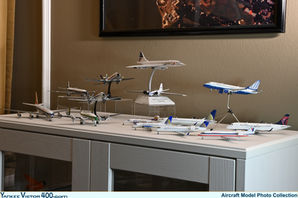
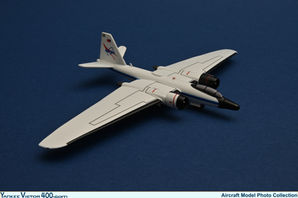


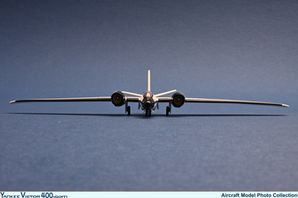


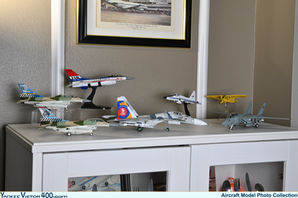

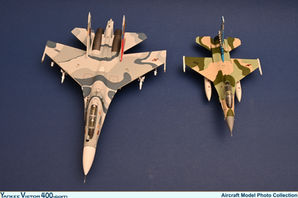
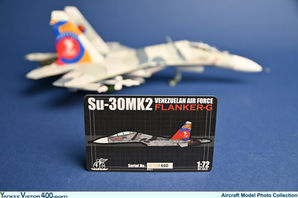
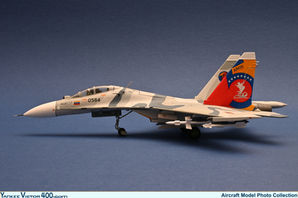










Comments